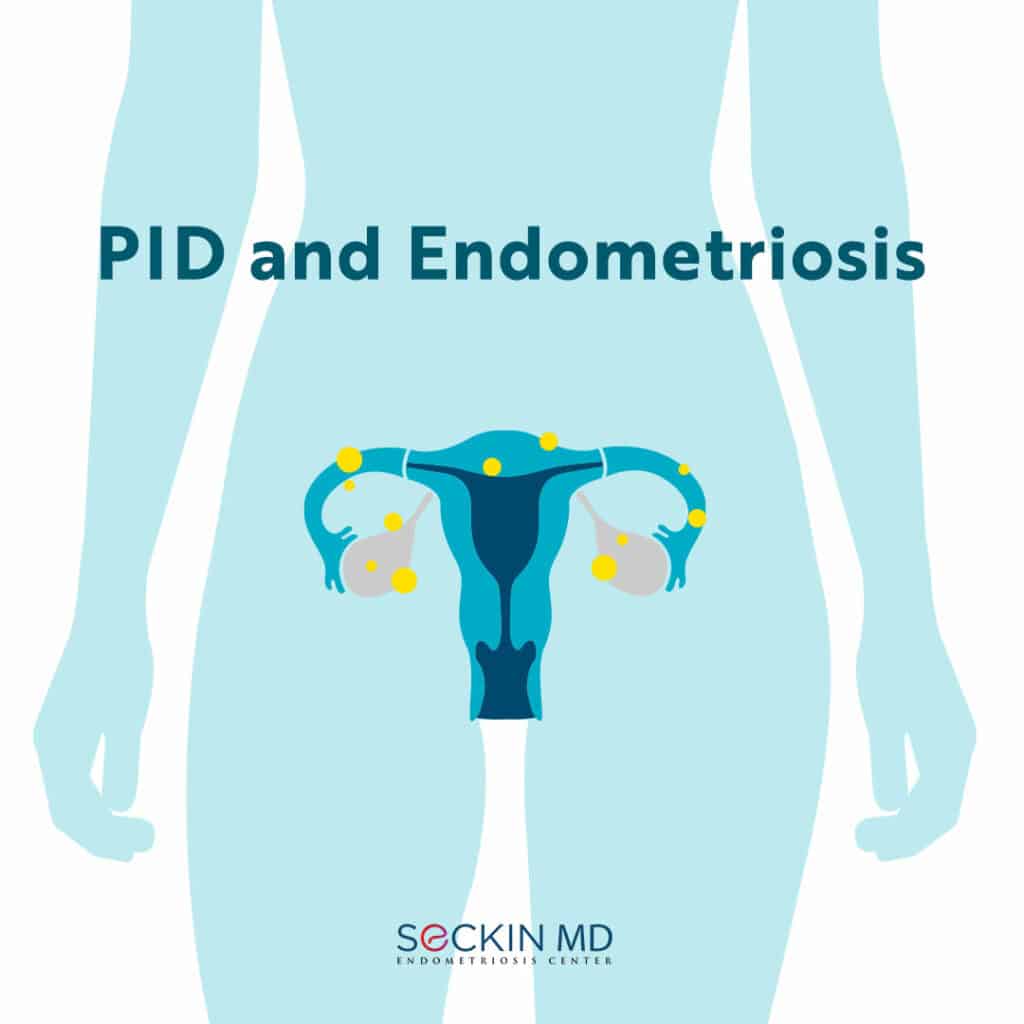PID and Endometriosis

Pelvic inflammatory disease (PID) refers to the inflammation in the female reproductive tract, sometimes as a result of a sexually transmitted infection (STI). PID has symptoms that may overlap with those of endometriosis.
What causes pelvic inflammatory disease?
PID may be caused by sexually transmitted bacteria such as gonorrhea and chlamydia, but can also be caused by other genito-rectal bacteria such as E. coli. Risk factors for PID include:
- being sexually active with multiple sexual partners
- having unprotected sex
- frequent douching
- previous history of PID or any other sexually transmitted disease
What are the symptoms of pelvic inflammatory disease?
Women with PID may be asymptomatic or symptoms may include:
- pain in the lower abdomen
- unpleasant vaginal discharge
- unusual vaginal bleeding before, during, or after coitus
- painful and frequent urination
PID can also lead to complications such as ectopic pregnancy, infertility, chronic pelvic pain, and abscesses in the reproductive tract.
How do doctors diagnose PID?
Doctors usually diagnose PID based on clinical symptoms and a gynecological exam. Positive tests for gonorrhea, chlamydia, or other pathogenic bacteria via swabs taken from the vagina or cervix can increase suspicion for the presence of PID. Other tests may include urine or blood tests, pregnancy test, ultrasound, or laparoscopy.
Is there a link between PID and endometriosis?
For the most part of the 20th century, doctors misdiagnosed endometriosis as PID.
Although STIs and endometriosis are 2 different entities, research has shown that PID may be more severe in its acute form and also not respond to antibiotic treatment in women who have endometriosis (and not PID).
However, there may be an association between PID and the risk of endometriosis. According to a 2018 Taiwanese nationwide study women with PID had a three-fold increase in the risk of developing endometriosis compared to those without PID. Possible reasons attributed by researchers include disequilibrium in the reproductive tract microbiota and excessive endometrial inflammation due to the presence of pathogenic bacteria.
Studies have also shown that the presence of certain bacteria in the lower reproductive tract can increase the risk of both PID and endometriosis. This is evident from the high numbers of bacteria such as Escherichia coli and endotoxins that occur in the menstrual blood of patients with endometriosis.
Although there are few studies about PID and endometriosis, it appears that endometriosis may predispose women to PID and vice-versa indicating similarities in pathological mechanisms.
How are PID and endometriosis treated?
PID is generally treated with broad-spectrum antibiotics once diagnosed and once the infection has resolved, in most cases does not require further medical treatment. The sexual partner may also have to be examined and treated to prevent recurrence even if they present no symptoms.
The gold standard for the treatment of endometriosis is laparoscopic deep excision surgery.
Do you have endometriosis and PID? Please do not hesitate to share your story by leaving a comment on our post on Facebook or Instagram.
Get a Second Opinion
Our endometriosis specialists are dedicated to providing patients with expert care. Whether you have been diagnosed or are looking to find a doctor, they are ready to help.Our office is located on 872 Fifth Avenue New York, NY 10065.
You may call us at (646) 960-3080 or have your case reviewed by clicking here.